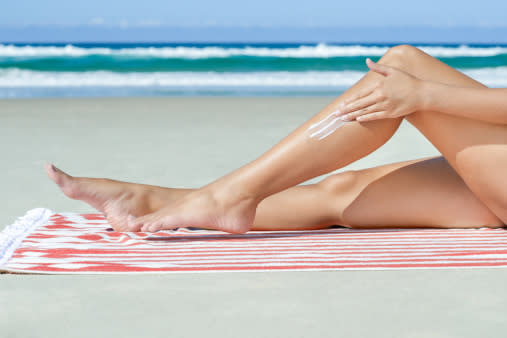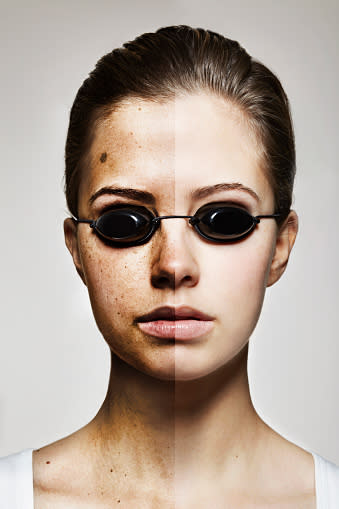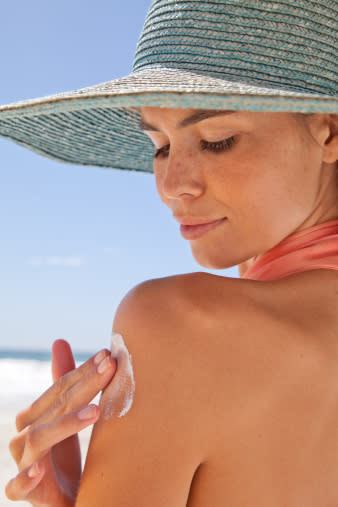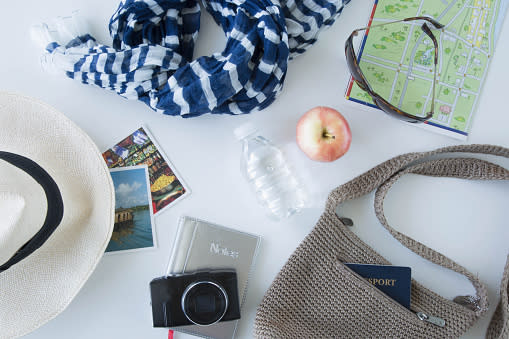Do We Actually Need To Wear Suncream Every Single Day?

The sunshine is FINALLY here and with the weather reaching 25 degrees this weekend, it’s time to talk about being sun safe. Do we need to do anything to protect ourselves from the sun? What happens if we don’t?
With sunshine being such a rare occurrence in the UK, sun protection doesn’t come as naturally to us compared to our friends from sunnier climes so we’ve interviewed some experts to get the facts. What should we actually be doing, and why?
We caught up with Dr Jana Witt, Health Information Officer at Cancer Research UK.
So we keep being told that the sun can damage our skin, but what actually are the effects of not protecting our skin from the sun?
We all need some sun for vitamin D but UV rays can also damage the genetic material inside our skin cells, so it’s important to protect skin from strong sun. The damage also builds up over time, and it can cause cells to start growing out of control, which can lead to skin cancer.
Exposing yourself to too much sun can also lead to ageing of the skin - making skin look wrinkled, leathery and old. You might even get permanent pigmentation marks which are difficult to get rid of.

Let’s understand a bit more about sunshine. My products always mention UVA or UVB – what is the difference and how does it impact our skin?
Both types of UV rays can damage our skin and cause skin cancer, but there are some differences. UVB is responsible for the majority of sunburns, while UVA penetrates deeper into the skin. It ages the skin, but contributes much less towards sunburn.
UVB rays are strongest during the middle of the day and do not significantly penetrate through glass, but UVA is present throughout the day and can also penetrate glass. Both rays damage skin cells though and risk altering our cell DNA
How does our skin react to low levels of sunlight compared to intense sun? Do we need different levels of protection?
During the UK summer, the sun’s UV rays are strongest between 11am and 3pm, but you can still get sunburnt outside of these hours and also on a cloudy day. The level of protection needed depends on the strength of the UV rays that day. To find out more, check the UV index for that day.
What’s the UV Index?
The UV index is a useful tool that tells us how strong the sun will be. Rated from 1-10, it takes account of things like cloud cover and levels can still be high enough to cause sunburn on overcast days. The higher the value, the greater the risk of sunburn and the less time it takes to damage your skin.
If the UV index is 3 or above, people who burn more easily or have fairer skin need to take care when out in the sun and protect themselves by seeking shade, covering up with clothing and using sunscreen.

The sun’s rays can still damage skin through the clouds [Image: Getty]
In an ideal world, what’s the best way to protect ourselves?
The best ways to protect your skin are to spend time in the shade and to cover up with clothing including t-shirt, hat and sunglasses. Sunscreen is actually best used for those parts of the body you can’t cover, rather than as a main method of sun protection.
So applying sun cream doesn’t completely protect the skin?
You can’t use sunscreen to get a safe suntan. No sunscreen can provide 100% protection, you’ll still be exposed to some UV rays, even if you’ve used sunscreen. This is why shade and clothing are really important and why you should never use sunscreen as an excuse to stay out in the sun for longer.
There’s always a chance you have missed a bit, and you won’t get the full level of protection unless you put enough sunscreen on AND reapply it regularly.
How much is enough and why do we need to reapply?
Sunscreen is easily rubbed, sweated and washed off, so re-applying it regularly is important, especially after going in the water and if you have towelled dry. Reapplying also helps to avoid missing bits of skin if you haven’t used enough, did you know, an adult needs about two teaspoonfuls to cover their face and upper arms?
All sunscreens let some UV rays through, so if you notice your skin turning pink or red, applying more sunscreen won’t help – cover up, and come out of the sun for the rest of the day.

Sun cream is not completely foolproof, some damage is still done [Image: Getty]
I hate suncream, it’s sticky and sometimes makes me breakout. What are the alternatives?
If you are intolerant to sunscreen, it might be one particular ingredient that’s the problem so check packaging and try different products, but it’s even more important to make the most of shade and clothing. Try a large brimmed hat to keep the sun off your face.
There are also two kinds of sunscreen – physical formulations that reflect the sun’s rays and chemical formulations which absorb them. The physical sunscreens, like mineral suncreams, do not get absorbed into skin and may be less irritating for sensitive skin.
What is the recommended minimum SPF for daily wear in British weather (ie rarely sunny)?
Cancer Research UK recommends sunscreens with a protection level of at least SPF 15 for UVB protection and 4 or more stars for UVA protection. Both of these are important, so don’t just focus on the SPF level.
In the UK, the sun isn’t strong enough to burn from about October to March. And even in the sunnier months the sun might not be that strong every day. A good rule of thumb is to check your shadow – if it’s shorter than you are, think about how you’ll protect your skin.
Does sun cream stop becoming effective after a certain amount of time? How often should I replace my products?
Most sunscreens have a shelf life of 2-3 years, the packaging should have an M symbol that tells you how many months it can be used for after opening.
Extreme heat can ruin the protective chemicals within your sun cream, so don’t leave them lying around in very hot places. Always ensure your sunscreen has not expired before you use it.

Make sure you pack cover-ups and a hat with your holiday essentials [Image: Getty]
With festival season coming up, what are the key items we should be bringing with us?
If you’re planning to be out all day, wear clothing that’ll give you some protection from the sun and make sure you pack a hat, sunglasses and sunscreen with SPF 15 and 4 or more stars. An umbrella’s a good bet too – it keeps you dry if it rains, and provides shade if the sun shines. Very handy.
So you heard it here from the professionals - don’t rely solely on suncream, make sure your products haven’t expired and check the UV index!
Cancer Research UK’s #ownyourtone campaign encourages people to embrace their natural skin tone and protect their skin from the sun. Find out more here.
Birthmarks Decoded: Why We Have Those Pesky Dark Skin Patches
The Beauty Buys That Will Save Your Skin On Long Haul Flights

